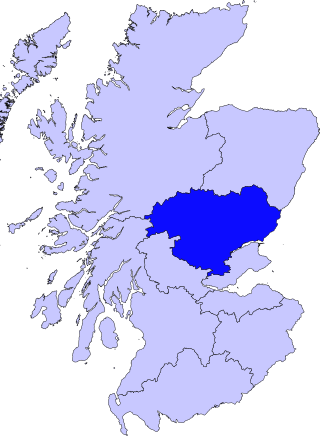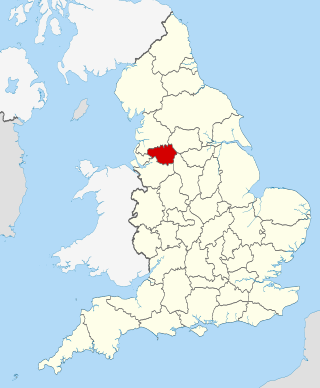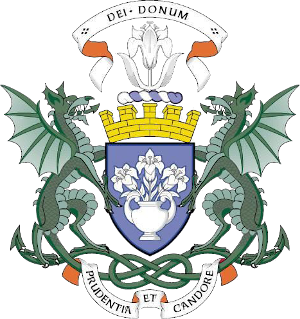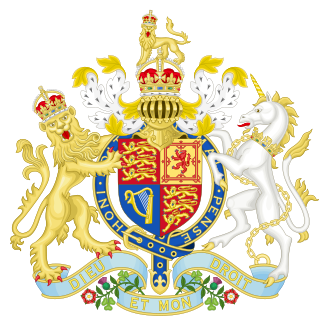
Tayside was one of the nine regions used for local government in Scotland from 16 May 1975 to 31 March 1996. The region was named for the River Tay.

Strathclyde Partnership for Transport (SPT) is a regional transport partnership for the Strathclyde area of western Scotland. It is responsible for planning and coordinating regional transport, especially the public transport system in the area, including responsibility for operating the Glasgow Subway, the third oldest in the world.

The regional chambers of England were a group of indirectly elected regional bodies that were created by the provisions of the Regional Development Agencies Act 1998. There were eight regional chambers, one for each of the regions of England except Greater London, which had opted for an elected mayor and assembly in 1998. All eight regional chambers had adopted the title "regional assembly" or "assembly" as part of their name, though this was not an official status in law. The chambers were abolished over a two-year period between 31 March 2008 and 31 March 2010 and some of their functions were assumed by newly established local authority leaders' boards.
In the United Kingdom, passenger transport executives (PTEs) are local government bodies which are responsible for public transport within large urban areas. They are accountable to combined authorities, which were created between 2011 and 2016 and took the role of integrated transport authorities (ITAs). The PTEs have joined together to form the Urban Transport Group, in which Transport for London and Strathclyde Partnership for Transport also participate.

Transport for Greater Manchester (TfGM) is a local government body responsible for co-ordinating transport services throughout Greater Manchester in North West England. It is an executive arm of the Greater Manchester Combined Authority (GMCA), the city region's administrative authority. The strategies and policies of Transport for Greater Manchester are set by the GMCA and its Greater Manchester Transport Committee (GMTC). The committee is made up of 33 councillors appointed from the ten Greater Manchester boroughs, as well as the Mayor of Greater Manchester.

Liverpool City Region is a mayoral combined authority and local enterprise partnership area in North West England.

The Convention of Scottish Local Authorities (COSLA) is the national association of Scottish councils and acts as an employers' association for its 32 member authorities.

The Auckland Regional Transport Authority (ARTA) was the central co-ordinating agency for transport in the Auckland Region of New Zealand from 2004 to 2010. In this role, ARTA provided public transport services, assigned funding and subsidies, and organised and advised on many aspects of regionwide transport. ARTA was under the control of the Auckland Regional Council (ARC) and was replaced by Auckland Transport on 1 November 2010.

Transport Scotland is the national transport agency of Scotland. It was established by the Transport (Scotland) Act 2005, and began operating on 1 January 2006 as an Executive Agency of the Scottish Government.

Dundee City Council is the local government authority for the City of Dundee. It was created in 1996 under the Local Government etc. (Scotland) Act 1994.
Nestrans is a partnership between Aberdeen City Council and Aberdeenshire Council which was a voluntary partnership until it was made statutory by the then Scottish Executive, in 2006. Its main role is to develop and deliver strategic transport plans across the North East of Scotland. It is one of seven transport partnerships across Scotland and is based in King Street, Aberdeen.

Tayside Fire and Rescue Service was, between 1975 and 2013, the statutory fire and rescue service for the area of Tayside in Scotland. It was amalgamated into the single Scottish Fire and Rescue Service in 2013.
North West Employers is the Local Authority Leaders’ Board for the North West region of England. It was established on 15 July 2008 and replaced the North West Regional Assembly. It was initially based at Wigan, in Greater Manchester but has since moved to St Helens in Merseyside.

The regions, formerly known as the government office regions, are the highest tier of sub-national division in England. They were established in 1994 and follow the 1974–96 county borders. They are a continuation of the former 1940s standard regions which followed the 1889–1974 administrative county borders. Between 1994 and 2011, nine regions had partly devolved functions; they no longer fulfil this role, continuing to be used for limited statistical purposes.

The Leeds City Region, or informally Greater Leeds, is a local enterprise partnership city region located in West Yorkshire, England. Prior to the West Yorkshire devolution deal, the partnership covered parts of South and North Yorkshire. According to the Office for National Statistics, as of 2017 the city region ranked 2nd behind Greater London for both population and GVA in the United Kingdom. It has a population of 2,320,214 million and a GVA of £69.62 billion.

The Greater Manchester Combined Authority (GMCA) is a combined authority for Greater Manchester, England. It was established on 1 April 2011 and consists of 11 members; 10 indirectly elected members, each a directly elected councillor from one of the ten metropolitan boroughs that comprise Greater Manchester, together with the directly elected Mayor of Greater Manchester. The authority derives most of its powers from the Local Government Act 2000 and Local Democracy, Economic Development and Construction Act 2009, and replaced a range of single-purpose joint boards and quangos to provide a formal administrative authority for Greater Manchester for the first time since the abolition of Greater Manchester County Council in 1986.

The West Yorkshire Combined Authority (WYCA) is the combined authority for West Yorkshire in England. It was established by statutory instrument under the Local Democracy, Economic Development and Construction Act 2009 on 1 April 2014. It is a strategic authority with powers over transport, economic development and regeneration. The metro-mayor of the authority is Tracy Brabin.

The Water (Scotland) Act 1967 is an Act of the Parliament of the United Kingdom that reorganised the water supply industry in Scotland, by creating Regional Water Boards to manage the treatment and supply of water to consumers, and a Central Scotland Water Development Board, which was responsible for developing new sources of water, and supplying that water to the Regional Water Boards in bulk.
The South-East Scotland Transport Partnership is a statutory regional transport partnership in Scotland.














